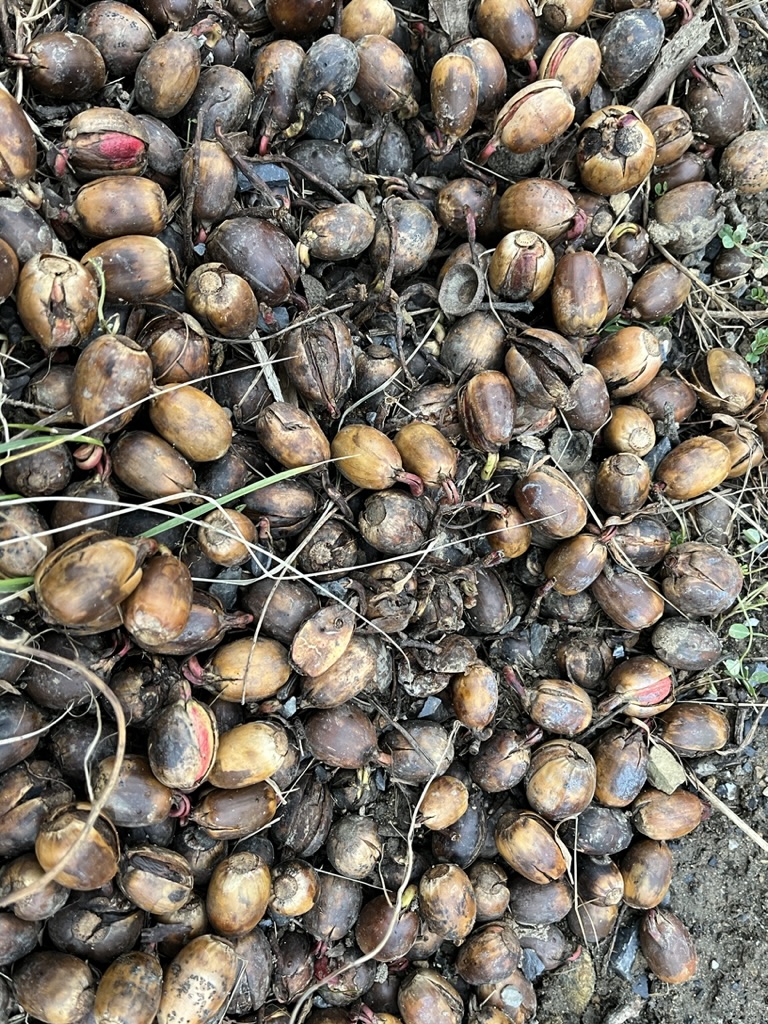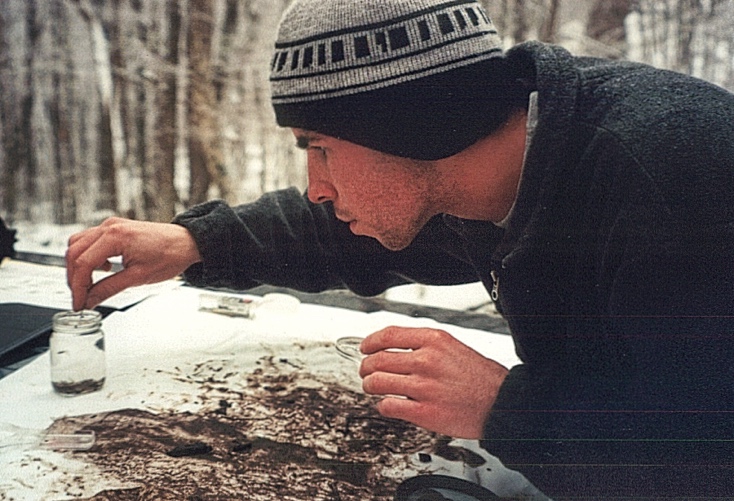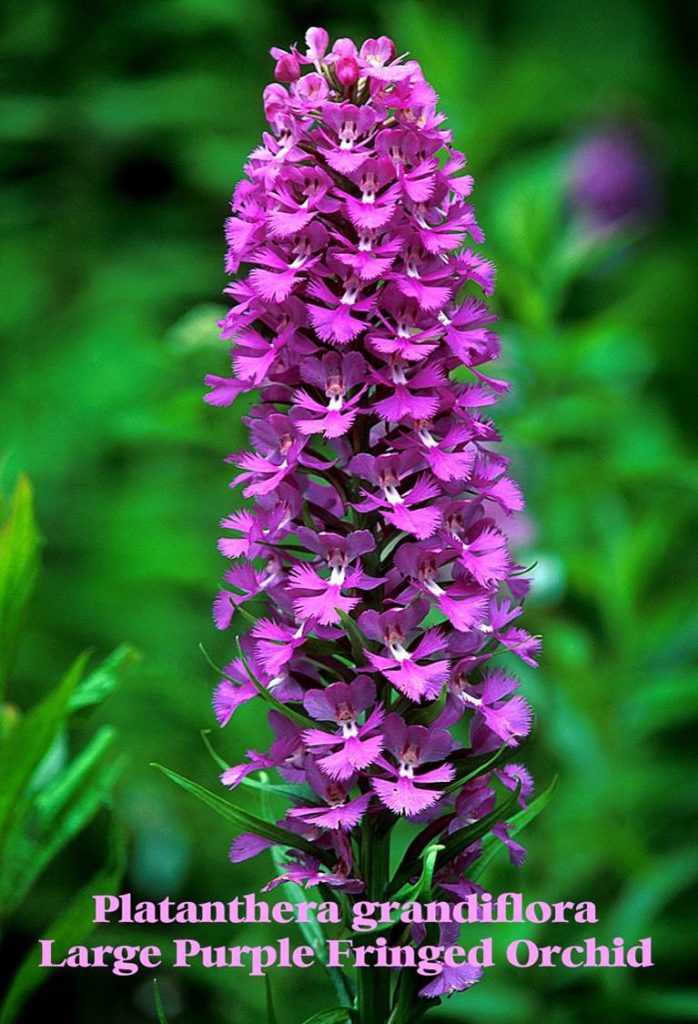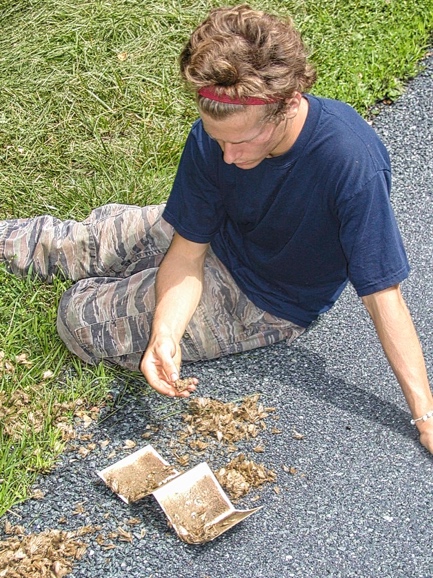Conservation
THE NATURE FOUNDATION AT WINTERGREEN CONSERVES THE NATURAL AND
CULTURAL HERITAGE OF THE CENTRAL BLUE RIDGE MOUNTAINS
TNFW’s professional staff and volunteer naturalists manage and help protect Wintergreen’s 6,000 acres of open space and forests located along the spine of one of the narrowest points of the Blue Ridge. The surrounding mountain ecosystems include some of the most unique and diverse plant communities on the planet and are home to abundant and diverse wildlife, billions-year old geologic formations and countless remnants of heritage left by Native Americans thousands of years ago.
Data Points Collected
Acres Protected
Nature Preserves
TNFW employs a full-time forester who monitors forest and habitat conditions across Wintergreen’s 6000 acres of open woodlands. He
- conducts and coordinates mast studies, wildlife population, and invasive species
- monitors water quality to assess possible stresses on ecosystem health
- leads mitigation efforts based on good science
- coordinates research among Virginia university scientists, the Smithsonian Institution, and government agencies that inform best practices for managing Wintergreen’s Forests and surrounding Blue Ridge Mountain ecosystems which contributes more broadly to the scientific community’s body of knowledge.
Mast Studies (2009-present)
TNFW conducts annual mast studies to obtain crucial data the Foundation’s forester uses to make management decisions regarding forest health and wildlife management. Hard mast (i.e., acorns and nuts) is a critical food resource for a variety of wildlife species in Wintergreen’s forests and the throughout the eastern U.S. In fact, the abundance and health of populations of deer, bear, wild turkey, rodents and grouse are influenced by the annual production (or lack) of hard mast, particularly oak acorns. The importance of oaks and acorns to wildlife in the eastern U.S. has led many biologists to consider oaks as a foundation species. It is likely that no other current tree species is capable of filling the functional role of oak for wildlife in eastern forests.
TNFW’s basic methodology involves scanning sample trees for 30 seconds with binoculars to determine presence or absence of mast. Trees are sampled in units consisting of 25 trees of the same tree group, primarily red and white oak groups. Sampling sites in Wintergreen’s forests are located off the Fortunes Ridge Trail, the Lower Shamokin Falls Trail and in the Crawford’s Knob Natural Area Preserve.

Loads of chestnut oak acorns
Water Quality Monitoring (2000-present)
The Wintergreen community consists of 11,000 acres of forested and developed land along the spine of the Blue Ridge Mountains. The headwaters of several streams originate within Wintergreen, flowing through the community and down to the Rockfish Valley. To serve the community and help protect our mountain ecosystem, TNFW regularly monitors and evaluates the various streams in our watershed to quickly identify even small changes in water quality.

TNFW employee sorts out macroinvertebrates in the net.
Six monitoring sites are located in the Stoney Creek, Paul’s Creek and Pond Hollow watersheds. Water testing includes:
- chemical analysis for properties: pH, nitrogen-nitrate, phosphate, dissolved oxygen, hardness, and turbidity;
- E-coli testing is also performed for our health; and
- macro-invertebrate diversity testing using the “Save Our Streams” monitoring methods.
Based on the results, TNFW is able to quickly identify any water quality issues and recommend prompt action to remedy the problem.
Emerging Threats
TNFW’s forester attends the Virginia Forests Health Conference each year to join other collaborators in trying to determine the next wave of potential threats to our forests. It seems that at least one pest, spotted lantern fly (Lycorma delicatula) is related to viticulture rather than our forests. Wavy leaved basket grass (Oplismenis hirtellus) is an expected plant general invasive, and the spread of feral hog populations is being observed.
Crawford’s Knob Natural Area Preserve
TNFW manages a conservation easement in partnership with Virginia’s Department of Conservation and Recreation’s Natural Heritage Division for the Crawford’s Knob Natural Area Preserve. The Natural Area Preserve encompasses 1,400 acres of mature hardwood forest and a rare mountain wetland south of Humpback Mountain. In 2008, Wintergreen Resort recognized the importance of preserving this ecologically significant area by pursuing a conservation easement leading to TNFW and Virginia’s Department of Conservation and Recreation’s Natural Heritage Division both holding easements on the site with TNFW its declared manager. Under the terms of the conservation easement, TNFW manages the Preserve “…to enhance, maintain, and protect rare species habitat and natural ecological communities for the perpetual benefit, education, and enjoyment of Virginia’s citizens.” TNFW’s management also promotes opportunities for research, education and visitor enjoyment. Recent research sponsored by TNFW in the Preserve includes a long-term climate change study, orchid research and eMammal tracking projects with the Smithsonian Institution, and a multi-year spotted skunk study.
Crawford’s Knob overlooks Nelson County’s Rockfish Valley and lies along a narrow section of the Blue Ridge, which is a critical bird migration corridor. Seemingly subtle qualities of greenstone-influenced soil have led to the establishment of a rare wetland community known as a “mountain-piedmont basic seepage swamp.”
Spring water seeping up through cobbles along the headwaters of Paul’s Creek supports a lush flora characterized by red maple, black ash and yellow birch in the overstory, spicebush in the mid-story, and a herbaceous community comprised of various orchids, lilies, ferns, grasses and sedges. Upslope from the swamp is an expanse of mature hardwoods, interspersed with steep, thinly vegetated outcrops.

The rare purple fringed orchid on a protected site at Wintergreen.
Whitetail Deer (2001-present)
TNFW began annual whitetail deer population studies in 2001 as a result of increased concerns from property owners, visitors, and resort management over the abundant and growing whitetail deer population. Concern increased due to the extent of damage this population was causing to the forested and landscaped environment. The goals of the population studies are to determine the approximate population levels that are sustainable for Wintergreen’s ecosystems.
TNFW uses a spotlight count because it is an easy and cost-effective way to determine a population size in an area such as in Wintergreen. For survey purposes, Wintergreen is divided into three developed areas: Devils Knob, Blackrock and Stoney Creek. A spotlight survey is conducted twice each year (winter and summer) with three nights in each area. Once the data are analyzed, TNFW gives recommendations to WPOA to use in its management of the deer population in the developed portion of Wintergreen.

Whitetail deer exhibiting new antler growth.

TNFW intern counting moths from a spongy moth trap.
Spongy Moth (2000-present)
TNFW began our study of spongy moth (formerly gypsy moth) in 1996 as the invasive moth entered our region and began defoliating and killing trees along large segments of the Blue Ridge and Allegheny Mountains. The study consists of trapping male spongy moths with a pheromone lure and estimating densities accordingly. If the population reaches a certain threshold, an egg mass survey is conducted to identify where likely defoliation may occur. If egg mass densities indicate a likely significant defoliation, environmentally safe pesticides are applied via aerial spraying.
The spread of the soil fungus (Entomophaga maimaga) currently allows natural control of the species. As long as we have abundant Spring rainfall, the magnitude of the spongy moth threat is greatly reduced. Nevertheless, TNFW continues to conduct studies every other year to monitor for the moth’s presence.
Want to learn more?
Please contact Forest Management at The Nature Foundation at Wintergreen
